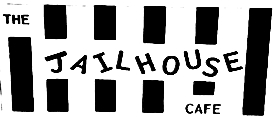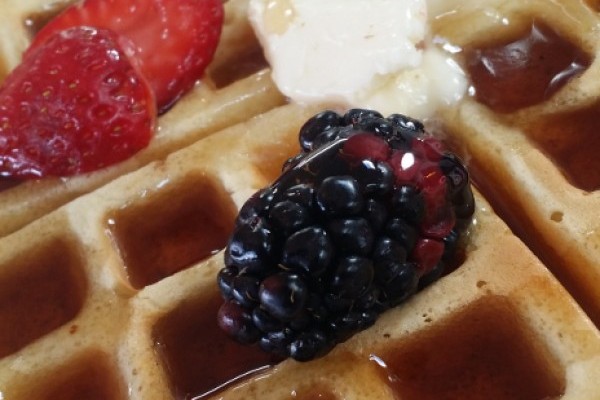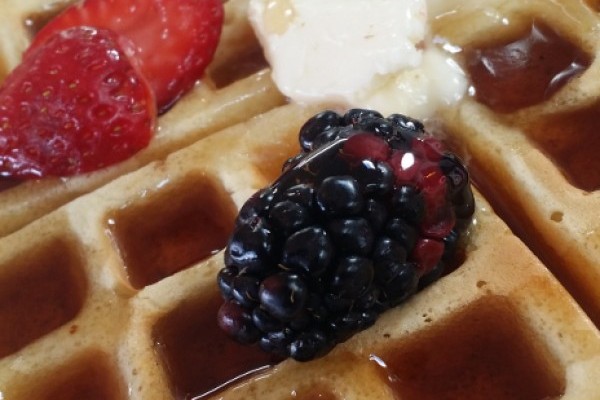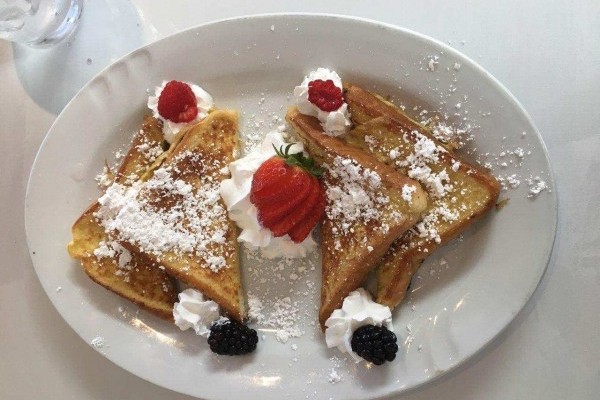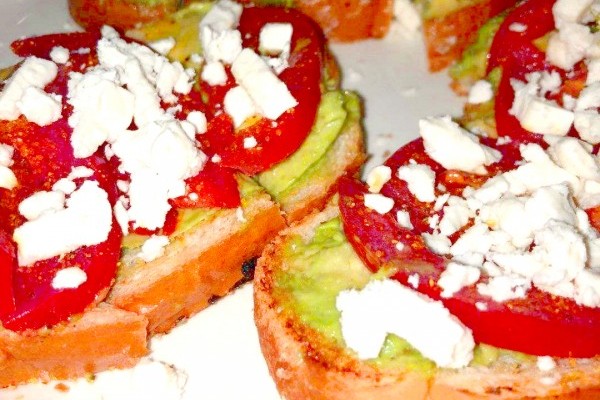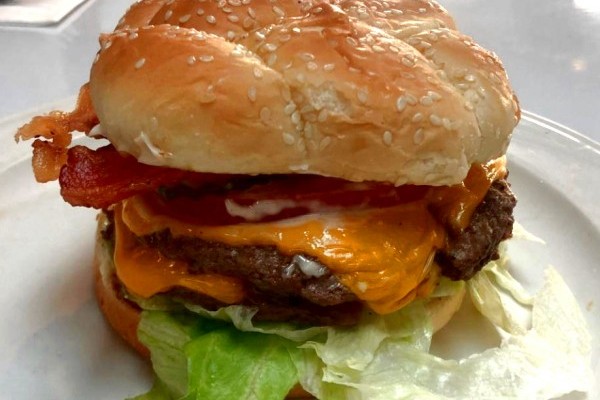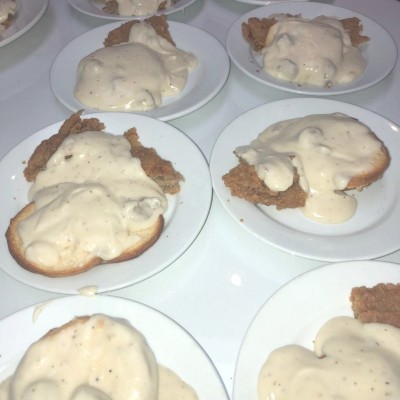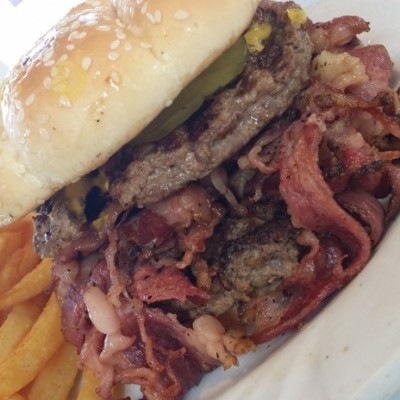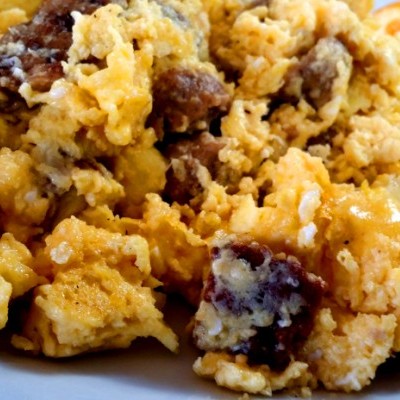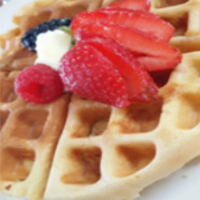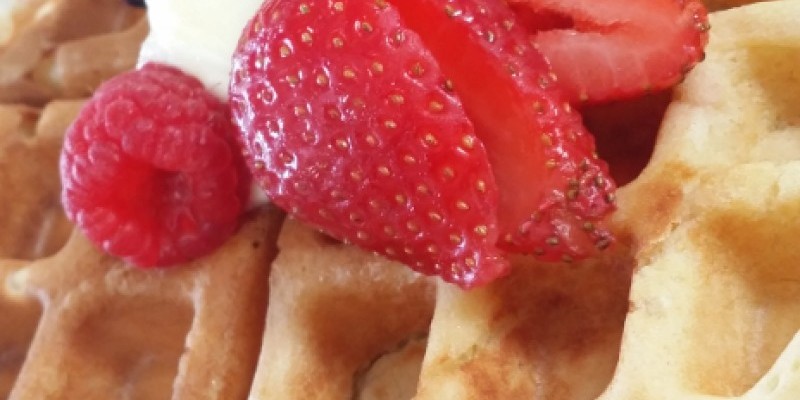
AMAZING HISTORY OF THE WAFFLE!
A waffle is an amazing dish made from leavened batter or dough that is cooked between two plates that are patterned to give a characteristic size, shape, and surface impression. There are many variations based on the type of waffle iron and recipe used. Waffles are eaten throughout the world, particularly in Belgium, which has over a dozen regional varieties. Waffles may be made fresh or simply heated after having been commercially precooked and frozen.
The Amazing thing is now waffles have become so pupular they are used as breads for now waffle sandwiches, waffle tacos, waffle pizzas to waffle cones for ice cream. You can even get chicken and waffles or steak and waffles or a waffle hamburger. Waffles can also be flavored with increadible ingredients, like pumpkin, cinnamon, apples, peanut butter and chocolate, eggs & potatoes, smoky bacon, avocado, cerial, jelly, candy and many other ingredients including a waffle salad. Recipies, topings and shapes have become endless!
Alternate spellings throughout modern and medieval Europe include waffe, wafre, wafer, wâfel, waufre, iauffe, gaufre, goffre, gauffre, wafe, waffel, wåfe, w%u0101fel, wafe, vaffel, and våffla.
Medieval origins
Waffles are preceded, in the early Middle Ages, around the period of the 9th–10th centuries, with the simultaneous emergence of fer à hosties / hostieijzers (communion wafer irons) and moule à oublies (wafer irons). While the communion wafer irons typically depicted imagery of Jesus and his crucifixion, the moule à oublies featured more trivial Biblical scenes or simple, emblematic designs. The format of the iron itself was almost always round and considerably larger than those used for communion.
The oublie was, in its basic form, composed only of grain flour and water – just as was the communion wafer. It took until the 11th century, as a product of The Crusades bringing new culinary ingredients to Western Europe, for flavorings such as orange blossom water to be added to the oublies; however, locally sourced honey and other flavorings may have already been in use before that time.
Oublies, not formally named as such until ca. 1200, spread throughout northwestern continental Europe, eventually leading to the formation of the oublieurs guild in 1270. These oublieurs/obloyers were responsible for not only producing the oublies but also for a number of other contemporaneous and subsequent pâtisseries légères (light pastries), including the waffles that were soon to arise.
14th–16th centuries
In the late 14th century, the first known waffle recipe was penned in an anonymous manuscript, Le Ménagier de Paris, written by a husband as a set of instructions to his young wife. While it technically contains four recipes, all are a variation of the first: Beat some eggs in a bowl, season with salt and add wine. Toss in some flour, and mix. Then fill, little by little, two irons at a time with as much of the paste as a slice of cheese is large. Then close the iron and cook both sides. If the dough does not detach easily from the iron, coat it first with a piece of cloth that has been soaked in oil or grease. The other three variations explain how cheese is to be placed in between two layers of batter, grated and mixed in to the batter, or left out, along with the eggs. However, this was a waffle / gaufre in name only, as the recipe contained no leavening.
Though some have speculated that waffle irons first appeared in the 13th–14th centuries, it was not until the 15th century that a true physical distinction between the oublie and the waffle began to evolve. Notably, while a recipe like the fourth in Le Ménagier de Paris was only flour, salt and wine – indistinguishable from common oublie recipes of the time – what did emerge was a new shape to many of the irons being produced. Not only were the newly fashioned ones rectangular, taking the form of the fer à hosties, but some circular oublie irons were cut down to create rectangles.[8] It was also in this period that the waffle's classic grid motif appeared clearly in a French fer à oublie and a Belgian wafelijzer – albeit in a more shallowly engraved fashion – setting the stage for the more deeply gridded irons that were about to become commonplace throughout Belgium
By the 16th century, paintings by Joachim de Beuckelaer, Pieter Aertsen and Pieter Bruegel clearly depict the modern waffle form. Bruegel's work, in particular, not only shows waffles being cooked, but fine detail of individual waffles. In those instances, the waffle pattern can be counted as a large 12x7 grid, with cleanly squared sides, suggesting the use of a fairly thin batter, akin to our contemporary Brussels waffles (Brusselse wafels).
Earliest of the 16th century waffle recipes, Om ghode waffellen te backen – from the Dutch KANTL 15 manuscript (ca. 1500–1560) – is only the second known waffle recipe after the four variants described in Le Ménagier de Paris. For the first time, partial measurements were given, sugar was used, and spices were added directly to the batter: Take grated white bread. Take with that the yolk of an egg and a spoonful of pot sugar or powdered sugar. Take with that half water and half wine, and ginger and cinnamon.
Alternately attributed to the 16th and 17th centuries, Groote Wafelen from the Belgian Een Antwerps kookboek was published as the first recipe to use leavening (beer yeast): Take white flour, warm cream, fresh melted butter, yeast, and mix together until the flour is no longer visible. Then add ten or twelve egg yolks. Those who do not want them to be too expensive may also add the egg white and just milk. Put the resulting dough at the fireplace for four hours to let it rise better before baking it. Until this time, no recipes contained leavening and could therefore be easily cooked in the thin moule à oublies. Groote Wafelen, in its use of leavening, was the genesis of contemporary waffles and validates the use of deeper irons (wafelijzers) depicted in the Beuckelaer and Bruegel paintings of the time
Charles IX, King of France, created the first legislation regulating waffle sales.
By the mid-16th century, there were signs of waffles' mounting French popularity. Francois I, king from 1494–1547, of whom it was said les aimait beacoup (loved them a lot), had a set of waffle irons cast in pure silver. His successor, Charles IX enacted the first waffle legislation in 1560, in response to a series of quarrels and fights that had been breaking out between the oublieurs. They were required "d'être au moins à la distance de deux toises l'un de l'autre. " (to be no less than 4 yards from one to the other).
17th–18th centuries
Moving into the 17th century, unsweetened or honey-sweetened waffles and oublies – often made of non-wheat grains – were the type generally accessible to the average citizen. The wheat-based and particularly the sugar-sweetened varieties, while present throughout Europe, were prohibitively expensive for all but the monarchy and bourgeoisie. Even for the Dutch, who controlled much of the mid-century sugar trade, a kilogram of sugar was worth ½ an ounce of silver (the equivalent of ~$7 for a 5 lb. bag, 01/2016 spot silver prices), while, elsewhere in Europe, it fetched twice the price of opium. The wealthier families' waffles, known often as mestiers, were, "...smaller, thinner and above all more delicate, being composed of egg yolks, sugar, and the finest of the finest flour, mixed in white wine. One serves them at the table like dessert pastry."
By the dawn of the 18th century, expansion of Caribbean plantations had cut sugar prices in half. Waffle recipes abounded and were becoming decadent in their use of sugar and other rare ingredients. For instance, Menon's gaufre from Nouveau Traité de la Cuisine included a livre of sugar for a demi-livre of flour.
Germany became a leader in the development and publication of waffle recipes during the 18th century, introducing coffee waffles, the specific use of Hefeweizen beer yeast, cardamom, nutmeg, and a number of zuickerwaffeln (sugar waffles). At the same time, the French introduced whipped egg whites to waffles, along with lemon zests, Spanish wine, and cloves. Joseph Gillier even published the first chocolate waffle recipe, featuring three ounces of chocolate grated and mixed into the batter, before cooking.
A number of the 18th century waffle recipes took on names to designate their country or region/city of origin – Schwedische Waffeln, Gauffres à l'Allemande and, most famous of all the 18th century varieties, Gauffres à la Flamande, which were first recorded in 1740. These Gauffres à la Flamande (Flemish waffles / Gaufres de Lille) were the first French recipe to use beer yeast, but unlike the Dutch and German yeasted recipes that preceded them, use only egg whites and over a pound of butter in each batch. They are also the oldest named recipe that survives in popular use to the present day, produced regionally and commercially by Meert.
The 18th century is also when the word "waffle" first appeared in the English language, in a 1725 printing of Court Cookery by Robert Smith. Recipes had begun to spread throughout England and America, though essentially all were patterned after established Dutch, Belgian, German, and French versions. Waffle parties, known as 'wafel frolics', were documented as early as 1744 in New Jersey, and the Dutch had earlier established waffles in New Amsterdam (New York City).
Liège Waffles, Belgium's most popular variety[citation needed] – a legendary creation by an 18th-century chef to the prince-bishop of Liège – were not a confirmed recipe until 1921.
Liège waffles, the most popular contemporary Belgian waffle variety, are rumored to have been invented during the 18th century, as well, by the chef to the prince-bishop of Liège. However, there are no German, French, Dutch, or Belgian cookbooks that contain references to them in this period – by any name – nor are there any waffle recipes that mention the Liège waffle's distinctive ingredients, brioche-based dough and pearl sugar. It is not until 1814 that Antoine Beauvilliers publishes a recipe in l'Art du Cuisiner where brioche dough is introduced as the base of the waffle and sucre cassé (crushed block sugar) is used as a garnish for the waffles, though not worked into the dough. Antonin Carême, the famous Parisian pastry chef, is the first to incorporate gros sucre into several waffle variations named in his 1822 work, Le Maitre d'Hotel Français. Then, in 1834, Leblanc publishes a complete recipe for gaufres grêlées (hail waffles), where gros sucre is mixed in. A full Gaufre de Liège recipe does not appear until 1921.
19th–21st centuries
Waffles remained widely popular in Europe for the first half of the 19th century, despite the 1806 British Atlantic naval blockade that greatly inflated the price of sugar bug people still wanted their waffles. So in the transitional period from cane to beet sugar, Florian Dacher formalized a recipe for the Brussels Waffle, the predecessor to American "Belgian" waffles, recording the recipe in 1842/43. Stroopwafels (Dutch syrup wafels), too, rose to prominence in the Netherlands by the middle of the century. However, by the second half of the 1800s, inexpensive beet sugar became widely available, and a wide range of pastries, candies and chocolates were now accessible to the middle class, as never before added to waffles' popularity and now candies and chocolates are added on top.
By the early 20th century, waffle recipes became rare in recipe books, and only 29 professional waffle craftsmen, the oublieurs, remained in Paris. Waffles were shifting from a predominately street-vendor-based product to an increasingly homemade product, aided by the 1918 introduction of GE's first electric commercial waffle maker. By the mid-1930s, dry pancake/waffle mix had been marketed by a number of companies, including Aunt Jemima, Bisquick, and a team of three brothers from San Jose, Calif. – the Dorsas. It is the Dorsas who would go on to innovate commercial production of frozen waffles, which they began selling under the name "Eggo" in 1953. Manufacturers are now testing the production of waffles with potato starch, which increase the stability of the waffle and protect them from sticking to the iron. This increased waffle making at home.
Belgian-style waffles were showcased at Expo 58 in Brussels. Another Belgian introduced Belgian-style waffles to the United States at the 1962 Seattle World's Fair, but only really took hold at the 1964 New York World's Fair, when another Belgian entrepreneur introduced his "Bel-Gem" waffles. In practice, contemporary American "Belgian waffles" are actually a hybrid of pre-existing American waffle types and ingredients and some attributes of the Belgian model.
What is old is now new again, a number of the 18th and 19th century varieties can still be easily found throughout Northern Europe, where they were first developed.
XXXXXX






